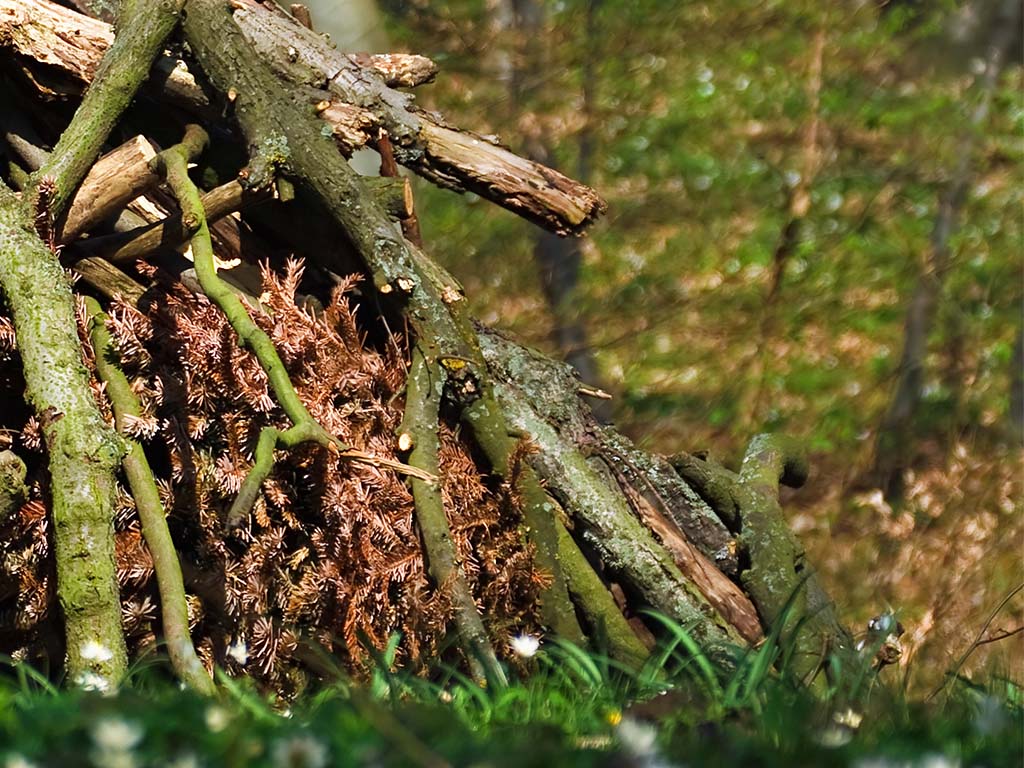Why Brush Piles Matter
A well-balanced wildlife habitat consists of four essential components: food, water, shelter, and space. While food and water sources are relatively straightforward to provide, shelter can often be limited in backyard settings. This is where brush piles come into play.
Brush piles are intentionally constructed collections of branches, sticks, and other plant materials placed over a supporting base or foundation. They serve as vital shelters for various wildlife species throughout the year. Here’s why they are crucial:
-
Protection from Predators: Brush piles offer a safe haven from potential predators, allowing animals to find refuge when they feel threatened.
-
Shelter from Severe Weather: During harsh weather conditions, such as storms or extreme cold, brush piles provide a shield against the elements, helping wildlife survive challenging periods.
-
Safe Corridors: They create pathways for animals to move safely through your backyard, reducing exposure to dangers as they travel.
-
Resting Spots: Many creatures, from birds to small mammals, need resting places. Brush piles offer these resting spots, contributing to the overall health of the local ecosystem.
Where to Build Brush Piles
While wildlife will utilize brush piles almost anywhere, there are specific locations where they are most beneficial:
-
Forest Edges and Openings: These areas often lack natural shelters, making brush piles a valuable addition.
-
Field Corners and Edges: In open fields, brush piles become crucial hiding spots for wildlife.
-
Stream-Marsh Margins: Placing brush piles near the transition zones between streams and marshes supports aquatic and terrestrial creatures.
-
Clearing and Thinning Areas: Where land is being cleared or forests are thinned, brush piles can mitigate habitat loss.
-
Pond Edges: Partially submerged brush piles along pond edges offer resting places for various animals.
To maximize their impact, consider building at least three or four brush piles per acre in areas devoid of natural wildlife cover. When placing them along woodland borders, aim for a distance of 200 to 300 feet between brush piles. The ideal location is within 10 feet of a woodland border, where they can serve as concealment for wildlife traveling along the edge. You can also strategically position brush piles near gardens to attract bug-munching birds.
Constructing a Brush Pile
Creating a brush pile involves two primary components:
1. Supporting Base
- Build the base using two layers of logs spaced evenly to allow easy access. You can incorporate drainage pipes, tiles, cinder blocks, or tires with holes as potential dens for animals.
- Construct the base over durable materials like stones or tires to slow down decay.
- Alternate layers of logs at right angles to form the base, resembling a log cabin. Opt for rot-resistant wood like cedar or locust.
- Avoid using treated wood for the base.
2. Pile of Plant Material on Top
- The “brush” part of the pile can consist of various plant materials, including old Christmas trees.
- Arrange small trees, branches, and other brush over the base to create a tepee or mound-shaped pile approximately five feet tall.
- Ensure the center of the pile is densely packed, while the edges remain loose, providing shelter while allowing easy access.
- Regularly replace decaying material to maintain the brush pile’s integrity.
Note: While brush piles offer numerous benefits, they can also attract woodchucks, skunks, and snakes, potentially becoming household pests. To mitigate this, keep brush piles away from your home. Additionally, be cautious of concealing predators, and avoid placing brush piles near ground-level bird feeders. Always check local ordinances before creating a brush pile habitat.
